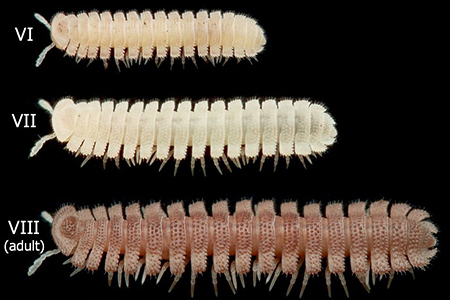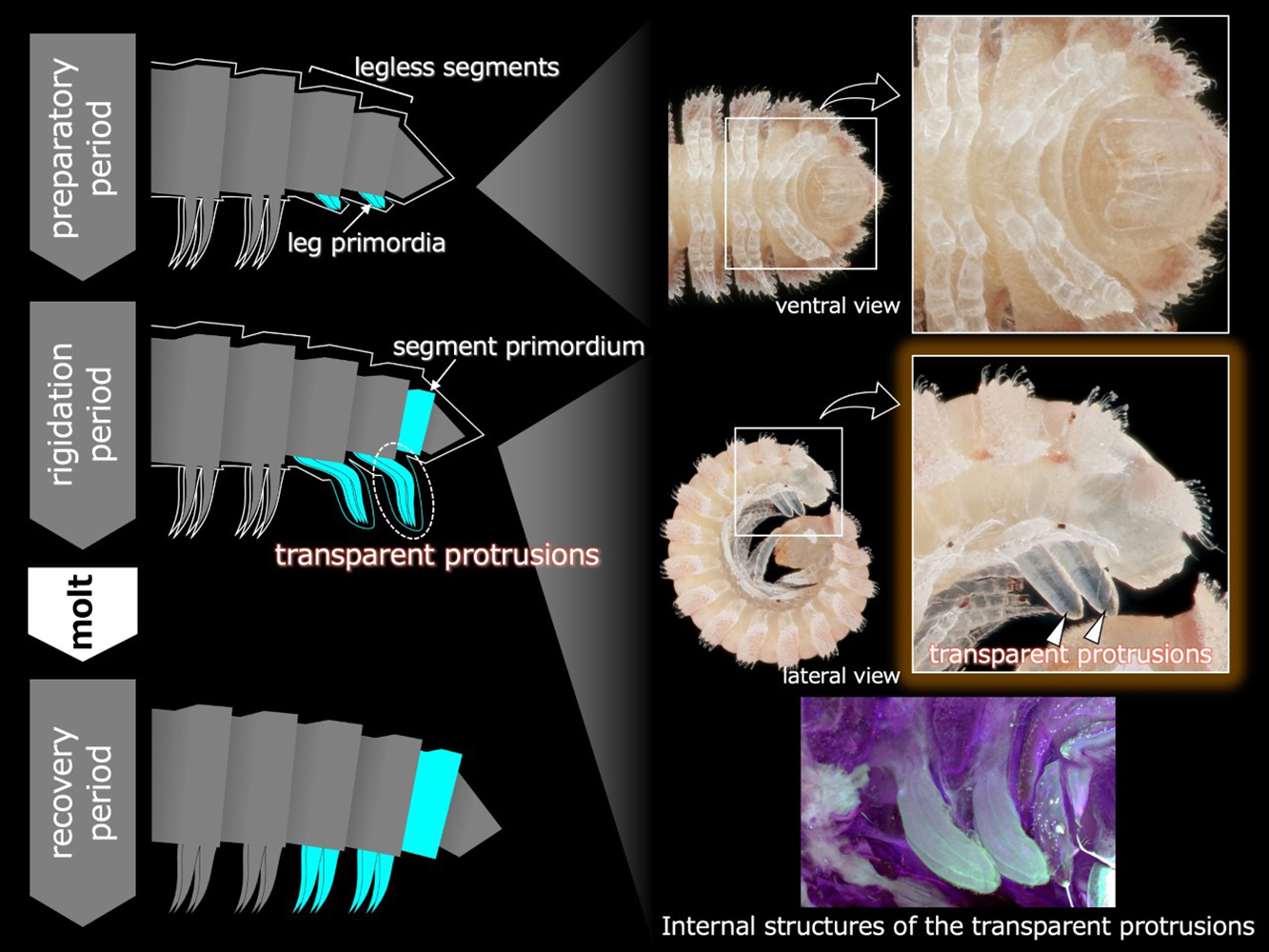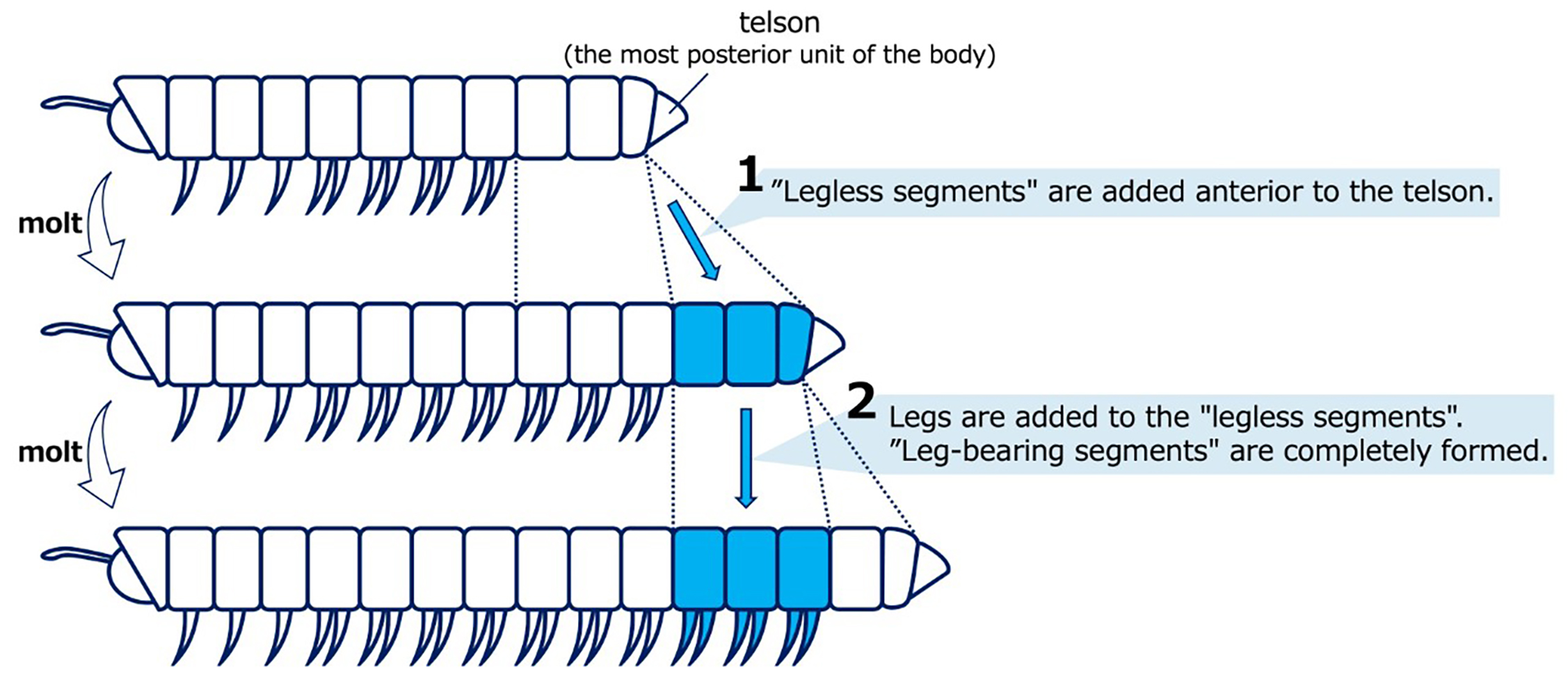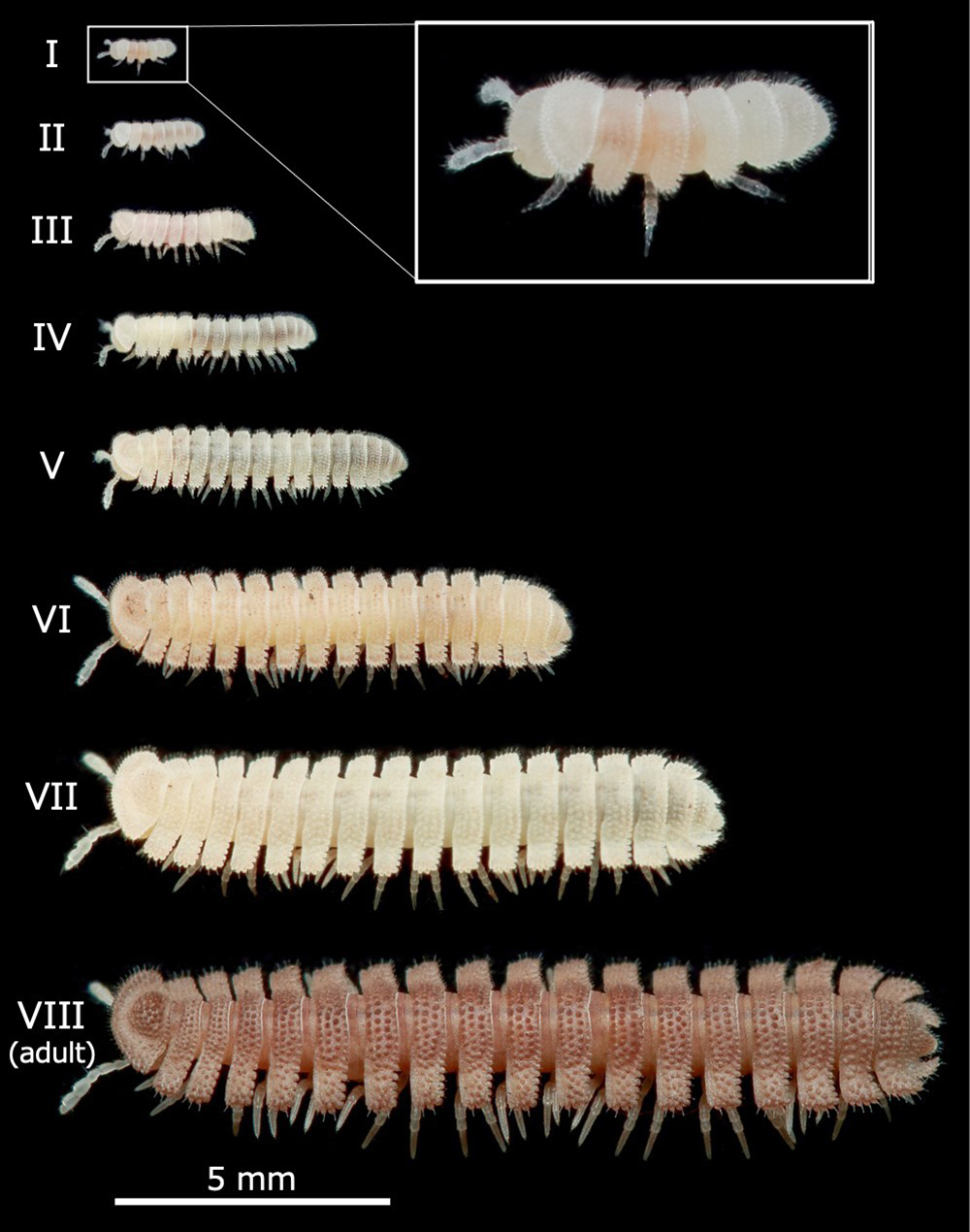How does a millipede get its legs? New legs on millipede Niponia nodulosa appear before, rather than only after, molting Research news


New legs. These microscopic images of the outside and inside of a millipede show the unexpected transparent protrusions, containing bundles of legs, present before the millipede molts. After the molt, while the millipede recovers, the legs are fully formed and become functional. © 2023 Soma Chiyoda
Millipede legs grow in an unexpected way, according to new research. Previously, it was thought that when a millipede molts (sheds its exoskeleton), it grows new segments on the end of its body without legs. Then after the next molt, the previously new segments re-emerge with fully formed legs attached. However, a team at the University of Tokyo has found that new segments actually contain tiny bundles of legs, which appear as transparent protrusions before molting and then become fully formed afterwards. This discovery could help us understand how not only millipedes, but also other arthropods (invertebrates with jointed legs) grow.
If you’ve recently been for a picnic in the park, you’ll probably have had to contend with a few creepy-crawlies. One that you might come across trundling under a shady tree is the harmless millipede. Famous for its multitude of legs (though the first to have more than 1,000 was actually only discovered in 2021), it is thought to have been one of the first creatures to walk on land and breathe air about 420 million years ago. Their lifestyle of burrowing in the dirt and digesting decomposing plant matter means that they play a very important role in our ecosystems, but there is still a lot we don’t know about them, including exactly how they get all those famous legs.
“In 1855, French entomologist Jean-Henri Fabre proposed the ‘law of anamorphosis.’ That law indicated a pattern in millipede growth, in which legless segments are first added to the body by molting and then legs are added onto that segment in the next molt. However, the physical changes that occur when segments and legs are added were not clear,” explained Professor Toru Miura from the Graduate School of Science at the University of Tokyo. “Our study is significant in that it adds new morphological knowledge to the law of anamorphosis after 168 years.”

Law of anamorphosis. This picture illustrates the idea of how millipede legs were formed, where new legless segments are added to the body and then the previous segments grow legs after the next molt. © 2023 Soma Chiyoda
Researchers used a scanning electron microscope (SEM) to study a common species of millipede called Niponia nodulosa, during different stages of molting and growth. This technique enabled them to view microscopic surface details on the bodies of the millipedes and look for any changes. The team also used another microscope called a confocal laser scanning microscope (CLSM) to look at what was happening inside the millipedes. “We expected that segments and legs would be added by molting, as happens in many other arthropods. However, we were surprised to find that drastic morphogenesis, the biological process of changing shape, actually started before molting,” said Miura.
When scanning the millipedes just a few days before molting, the team could already see two pairs of small, wrinkled legs under the cuticle of the legless segment. Just before the millipede molted, transparent protrusions containing the new bundle of legs were observed on the outer surface of the segment, covered by a thin tissue membrane. “Arthropods generally undergo morphological changes through molting, but the phenomenon discovered in this study deviates from this. With these millipedes at least, transparent protrusions with legs appeared from the elastic cuticle (an external layer that provides muscular support) before they molted,” said Miura. “This result suggests that changing shape without molting via the cuticle may also be important in other arthropods.”

Millipede life cycle stages. When millipedes first hatch, they have only three pairs of legs. They then go through about eight life cycle stages, with periods of molting, resting and growth. By the time they are adults, they usually have somewhere between 40 to 400 legs, but the longest found so far (deep underground in Australia) had an impressive 1,306. © 2023 Soma Chiyoda
As arthropods make up about 75% of all animal life on Earth, it was significant to the researchers that a familiar animal like the millipede could provide a new and important insight into its development and diversity. “Since it is not yet known whether this phenomenon is widely seen in other millipedes, we will need to study other species for comparison. We would also like to continue our research into the molecular mechanisms involved in anamorphosis, as these are still largely unclear,” said Miura. “Our work has shown us that there are still many surprising discoveries to be made in nature, right under our feet.”
Papers
Soma Chiyoda, Kohei Oguchi, Toru Miura, "Appearance of a transparent protrusion containing two pairs of legs on the apodous ring preceding the anamorphic molt in a millipede, Niponia nodulosa," Frontiers in Zoology 20: 14 (2023): April 18, 2023, doi:10.1186/s12983-023-00493-0.
Link (Publication )
)





